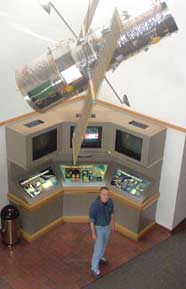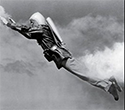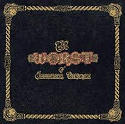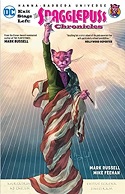Looking Into The Past That Is The Present
I bought a copy of Goodnight And Good Luck after seeing many ads in my feed for the play coming to Broadway starring George Clooney as Edward R. Murrow.
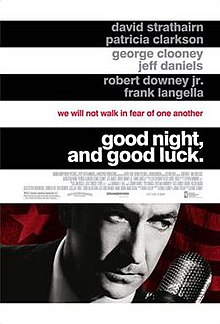
Tonight I could only watch maybe the first half of it.
It’s filmed in black and white, and the photography is not only first class, but I think it deliberately harkens back to the film styles of the mid 1950s. Certainly the detail in the clothing, furnishings, technology, and that practically every male in the cast is smoking, or at least holding a cigarette, makes you believe you are looking through a magic screen into the past. The filmmakers recreated that 1950s atmosphere with careful attention to detail.
The movie, and the broadway play, is summarized as the battle between Murrow and Senator Joe McCarthy. But what hits you in the face watching the beginning of it is the environment of the Red Scare. There’s a story at the beginning Murrow reports on, concerning a young airforce man who was convicted of being a subversive on the basis of that being defined as anyone who maintained a close relationship with a communist whether or not they were one themselves. The man was convicted on the basis of sealed documents that neither he, nor his lawyer, nor the presiding judges were allowed to look at. This, in the movie, is Murrow’s first strike at what America was becoming during the Red Scare.
Which was also a Lavender Scare. There’s a scene in the first half of Murrow hosting his Person To Person show. Murrow is interviewing, via television link (that was the show’s hook), to Liberace in his Hollywood home. Murrow’s questions to him are later shown in the cue cards a tech is holding off camera, which tells us they were scripted in advance, and these are not casual conversations between Murrow and his guests they are made to appear. Murrow asks Liberace if he’s planning on getting married soon. Liberace gives him the standard boilerplate about waiting for that perfect mate. Afterward, as the lights in the studio are turned off, Murrow sits alone with a cigarette looking very unhappy at what he had just done.
Before the See It Now broadcast about the young airforce man, two colonels show up in the office of Fred Friendly to basically tell him to scrap the story. We know things you don’t about this, how dare you question our findings. Friendly stands his ground. What findings? Who is making the accusations? How reliable is this source? But the tension in the air is palpable. The military is telling a news broadcaster not to air a story, just on their say-so.
And all for case that turns on a rule that says you are to be considered a subversive if you maintain a close relationship to a communist. It was his father and his sister, and the accusation wasn’t they were communists, but communist sympathisers. The Air Force told him he had to denounce them both. And he wouldn’t. So he was convicted of being a subversive himself.
Later, after some McCarthy hearings CBS was covering, Friendly is given a packet by a creepy man somewhere in the Capitol (who I suspect was supposed to represent Roy Cohn but I didn’t catch the name Friendly says). The packet allegedly contains proof that Murrow is a communist. Friendly walks away in disgust but asks if he can keep the packet. “Sure,” says the creep with a smile, “I’ve made copies.”
Shortly after that scene I had to turn it off. I’ll probably get back to it tomorrow, but I was thinking maybe I should have watched After The Thin Man instead. It was too much like what we are living through now, and that was the early to mid 1950s.
A criticism often leveled at the movie after it came out was that its portrayal of McCarthy was too over the top…not knowing that the clips of McCarthy used in it are actual news footage from those events.
McCarthy’s sidekick during his red baiting capitol hearings was Roy Cohn. And Roy Cohn is, so I’m told, the man who taught Donald Trump everything about how to make the legal system turn against itself rather than you, and how to make powerful people afraid of you. It’s not just a likeness between then and now, it’s a bloodline.
